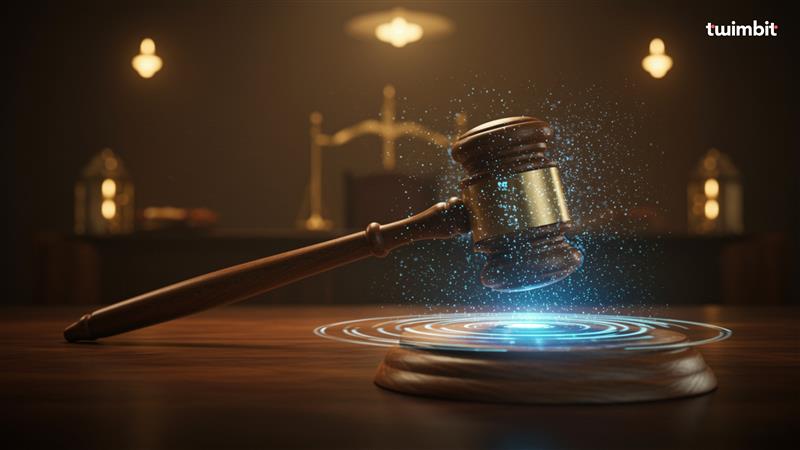India’s judiciary is facing a silent crisis. With over 53 million pending cases, the legal system is overwhelmed, slow, and increasingly inaccessible to the common citizen. The consequences are severe: justice delayed for decades, lives disrupted, and public trust eroded.
1. The Scale of the Problem
As of 2025:
- 53 million cases are pending across all levels of courts
- 47 million cases (nearly 85%) are stuck in district courts
- Over 180,000 cases have been pending for more than 30 years
- In Uttar Pradesh, the Allahabad High Court alone has over 1 million pending cases, with judges handling up to 1,000 cases a day
According to the National Judicial Data Grid (NJDG):
- 62.5% of all cases are older than one year
- In states like Bihar, Meghalaya, and West Bengal, over 50% of district court cases are older than three years
2. What Kind of Cases Are These?
The backlog spans both civil and criminal matters:
Civil Cases (~11 million)
- Land and Property Disputes: ~30–40%
- Family Law (divorce, custody, maintenance): ~15–20%
- Contractual and Commercial Disputes: ~10–15%
- Government Litigation: ~50% of total litigation involves government entities
Criminal Cases (~36 million)
- Theft, Cheating, Fraud: ~25–30%
- Assault and Bodily Harm: ~15%
- Rape and Sexual Offenses: ~5–7%
- Murder and Attempt to Murder: ~3–5%
- Minor Offenses (e.g., trespassing, public nuisance): ~30–40%
Additionally:
- 574,000 prisoners are currently in jail
- Over 75% are undertrials—awaiting case resolution
- Many have been incarcerated for over 5 years without conviction
3. Why Cases Don’t Close
Several systemic issues contribute to the backlog:
- Shortage of judges: Only 21 judges per million people, far below the recommended 50
- Government litigation: The government is the biggest litigant, responsible for half of all cases
- Infrastructure gaps: Many courts lack basic digital tools and staff
- Procedural delays: Frequent adjournments, outdated laws, and poor case management
4. The Elephant in the Room: Corruption
Corruption in the judiciary, though hard to quantify, is deeply corrosive:
- A judge was implicated in a ₹50 crore scam involving fraudulent death compensation claims
- Another was found with burnt bundles of cash at his residence, triggering a Supreme Court inquiry
- Allegations of undue influence and opaque appointments continue to plague the system
These incidents shake public confidence and reinforce the perception that powerful individuals can bend the system.
5. When the Powerful Walk Free
India has witnessed several high-profile cases where justice was delayed or denied. In many instances, wealth and influence have enabled prolonged legal battles or outright evasion—further eroding trust in the system.
6. A New Hope: Agentic AI Lawyers
Agentic AI Lawyers—autonomous legal agents trained on statutes, precedents, and procedural law—can help triage and resolve B and C class cases (non-violent, procedural, civil disputes). These AI systems can:
- Recommend settlements or sentencing
- Detect bias and inconsistencies
They won’t replace human judges but can augment them, enabling faster, fairer resolution of routine cases.
7. Human-AI Collaboration: A Jury of Minds
To ensure fairness and accountability, decisions must not rest solely with machines. Instead, we propose a hybrid model, a “Jury of Minds”, where Agentic AI works alongside a cross-functional human committee:
- Police for evidence validation
- Law school professors for legal interpretation
- Eminent citizens—retired judges, senior advocates, civil society leaders—for ethical review
7a. Human-AI Decision Matrix
To mitigate risks like AI hallucination or bias, we introduce a decision matrix:
Agentic AI Decision Workflow
| Step |
Role |
Action |
| 1 |
Agentic AI |
Recommends decision based on evidence and law |
| 2 |
Jury Panel |
Reviews AI recommendation |
| 3 |
Majority Vote |
If majority supports AI's decision, it is considered final |
| 4 |
Majority Dissent |
Triggers re-evaluation or escalation to higher judicial authority |
This model ensures transparency, accountability, and human judgment—while leveraging AI’s speed and consistency.
8. Is Anyone Doing This?
Globally, countries like China, Germany, and Morocco are piloting AI in judicial systems. The European Union is exploring predictive justice and online dispute resolution. India has begun digitizing courts through the eCourts Project and NJDG, but AI integration remains limited.
9. The Takeaway: A Call to Action
India’s legal system needs bold reform. Agentic AI is not a silver bullet, but it’s a powerful tool, if used wisely. We must:
- Pilot AI in low-risk cases
- Create collaborative review boards
Let’s not wait another decade. Let’s build a system where justice is timely, fair, and accessible, for everyone.
10. A Nation Transformed, But Still Miles to Go
India has made remarkable strides in the last decade:
- Aadhaar: Universal digital identity for 1.3+ billion citizens
- Jan Dhan Yojana: 500+ million bank accounts opened
- Direct Benefit Transfers: Subsidies reach the poor directly
- UPI: Over 10 billion cashless transactions monthly
- Swachh Bharat Mission: 100+ million toilets built
- Clean Ganga Mission: Significant progress in river restoration
- Startup India & Digital India: Empowering entrepreneurs and digitizing governance
These are transformational shifts. Yet, the judiciary, police, and government administration remain areas where reform is urgently needed. Corruption, inefficiency, and delay continue to erode public trust and deny justice to millions.
India has shown it can lead the world in digital innovation and inclusive growth. Now, it must bring the same resolve to cleaning up its justice system—by embracing technology, transparency, and accountability.
Enjoyed the read? Let’s take it further.
Connect to unlock exclusive insights, smart AI tools, and real connections that spark action.
Schedule a chat to unlock the full experience
